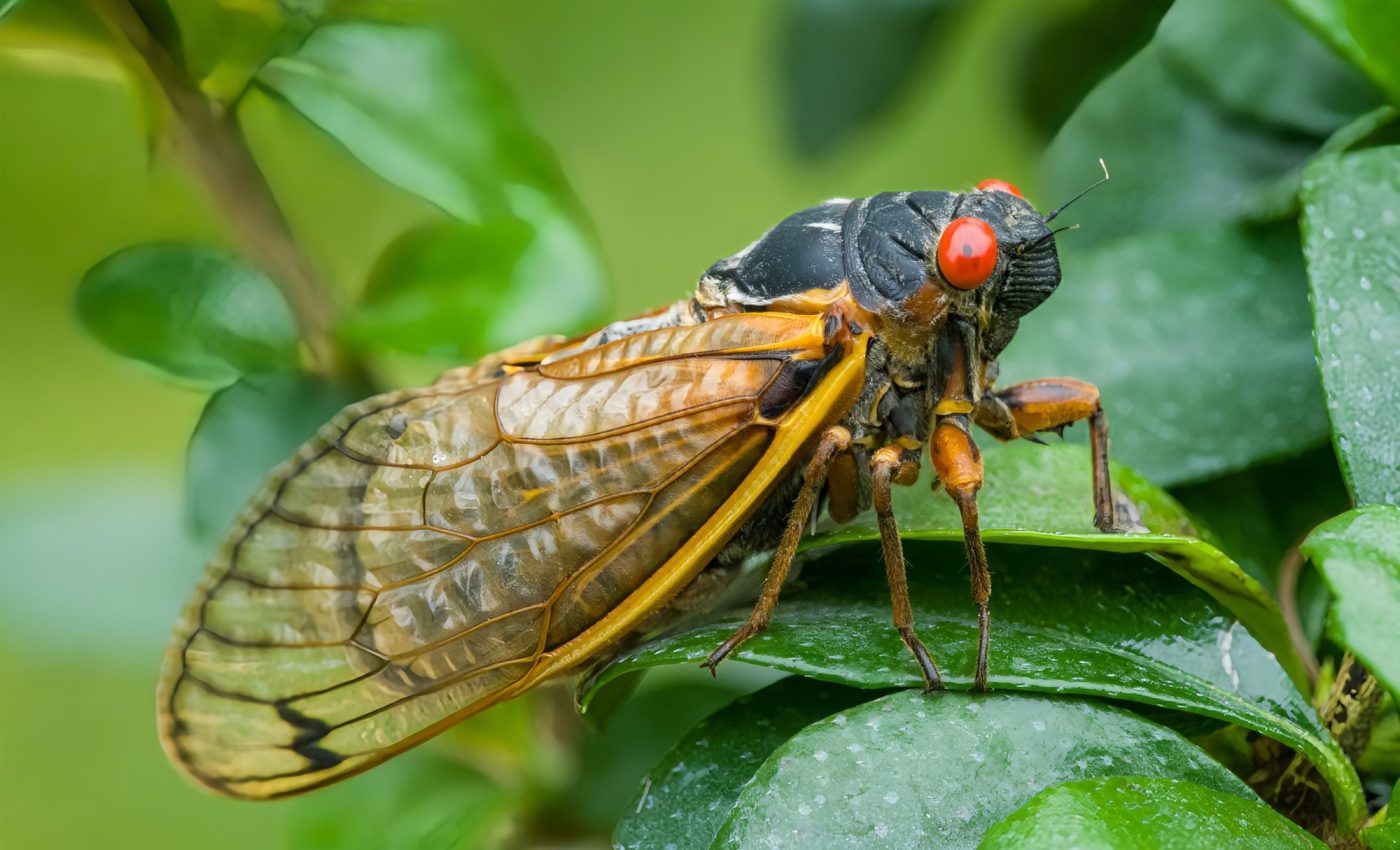
Cicada wings inspire new antibacterial technologies
Cicada wings, with their antibacterial properties, are fascinating scientists this summer. Trillions of periodical cicadas, members of the genus Magicicada, have emerged after years of dormancy, creating a spectacle that some likened to a “cicadapocalypse.”
For many, this event feels mesmerizing, mysterious, and magical. It’s also a great opportunity for scientific discovery and innovation.
Antibacterial properties of cicada wings
This year marked a rare and extraordinary event in the state of Illinois. Both the 13-year Brood XIX and the 17-year Brood XIII of the Magicicada genus emerged at the same time. This rare event had not occurred since 1803, and won’t happen again for another 221 years.
The mass emergence of cicadas signaled a seminal moment for the researchers and entomologists at the Beckman Institute for Advanced Science and Technology, a renowned research center that is part of the University of Illinois Urbana-Champaign.
The team had an unprecedented abundance of cicadas at their disposal, thanks to the unique environmental phenomenon.
Excited by the potential, the experts set out to use these cicadas for various innovative research applications, exploring the unique properties and behaviors of the insects.
The projects included materials science, studying cicada wings for new materials, and microbiology, examining microorganisms in their habitats to understand ecosystem health and interactions better.
This diverse range of research not only promised to yield groundbreaking discoveries but also highlighted the importance of biodiversity in scientific innovation.
Unusual characteristics of cicada wings
A critical area of study revolves around the unusual properties of a cicada’s wing. Yutao Chen, a graduate student at Beckman studying under Professor Marianne Alleyne, delved into the microscopic world of cicada wings.
“Cicada wings are superhydrophobic, meaning they’re really waterproof, and they also have excellent antibacterial properties,” explained Chen, whose research focuses on fabricating functional cicada-inspired surfaces.
Hidden nanoscale features
The secret of the cicada wing’s magical properties lies in its hidden nanoscale features. When magnified 10,000 times, the cicada wing reveals its true complexity.
What appears to be a smooth surface has microscopic structures known as nanopillars. These tiny features contribute to the wing’s unique characteristics.
Distributed uniformly across each wing, these nanopillars are the key to the wings’ remarkable hydrophobic and antibacterial properties.
When microbes touch the nanopillars, they suffer physical damage to their outer membranes. This process effectively eliminates the microbes. It showcases the remarkable defensive mechanisms found in cicada wings.
Antibacterial surfaces inspired by cicadas
To mimic these natural antibacterial features, Chen used an advanced method known as nanoimprinting lithography. This technique makes it possible to copy the tiny nanopillars from cicada wings onto a type of plastic called polystyrene.
The resulting material is precisely textured with nanopillars, giving it the power to effectively destroy bacteria. This demonstrates the material’s potential for innovative applications. It could be used to create self-cleaning and antibacterial surfaces.
Future of antibacterial surfaces
Chen’s work is far from over. In fact, he intends to experiment with other fabrication techniques and observe more dynamic interactions between bacteria and replicated surfaces.
With over 95% of bacteria destroyed within 3 hours by the replicated nanopillars, the future holds promise for the development of durable, antibacterial surfaces inspired by a humble insect’s wing.
We learn from nature. This is the essence of bioinspired design. It leads us into a new era of scientific discovery and also sparks technological innovation.
With the magic of the cicada as our muse, who knows what we might uncover next?
Cultural significance of Cicadas
In Japan, cicadas are cherished for their melodic songs, which are an integral part of summer festivals. Their presence is often associated with poetry and reflective thoughts on the transient beauty of life.
Similarly, in Native American cultures, cicadas are viewed as symbols of resilience and perseverance, echoing their remarkable life cycle.
Moreover, cicadas have become subjects of scientific curiosity and environmental study. Their unique life cycles, which include long periods of dormancy followed by a vivid emergence, offer insights into ecological balance and the effects of climate change.
As researchers continue to study cicadas, their cultural and scientific importance highlight the connections between life and nature.
—–
Like what you read? Subscribe to our newsletter for engaging articles, exclusive content, and the latest updates.
Check us out on EarthSnap, a free app brought to you by Eric Ralls and Earth.com.
—–













